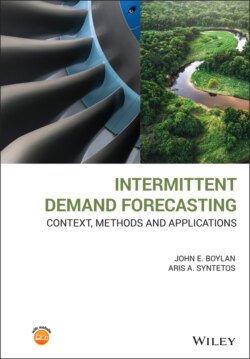Читать книгу Intermittent Demand Forecasting - John E. Boylan - Страница 90
3.7.3 Setting SKU Level Service Targets
ОглавлениеIt is natural to define fill rates in the same way at aggregate and SKU levels. Then, it is clear that fill rate targets set at an aggregate level can also be applied at SKU level. As previously mentioned, these targets can be set differentially by stock category.
An alternative approach is to treat the items in a class separately if they have different unit costs. Thonemann et al. (2002) presented a model to reduce the overall stock costs by assigning higher fill rate targets to lower cost items and lower fill rate targets to higher cost items, while ensuring that the overall fill rate target is met. Other authors (Zhang et al. 2001; Teunter et al. 2010, 2017) have proposed approaches based on ranking SKUs, using various criteria, and then treating the SKUs differentially. Some of these approaches will be reviewed in Chapter 11.
Systems having the facility to experiment with service level targets at the level of the individual SKU are available (for example, at the time of writing, RightStock from DBO Services and the Inventory Planner of Arkieva). In Figure 3.3 we show a screenshot of the Inventory Strategist function from RightStock.
In the example given in Figure 3.3, the current system target cycle service level is set to 95% (fifth row of the ‘Current parameters’ column). Managers may experiment with the setting of different targets for a particular SKU. In the example given above, these experiments are shown as three scenarios (target service levels of 93%, 97%, and 99.5%). The bar chart shows the effect of varying the target, with respect to the average cycle stocks (to cover expected demand) and safety stocks (to allow for uncertainty of demand). This enables managers to make more informed judgements as to the most appropriate service level for a specific SKU.
Figure 3.3 RightStock Inventory Strategist.
Source: Teunter et al. (2017), Figure 1.
In conclusion, we can use the ‘what if’ facilities of software packages to experiment with different target service levels, at the level of an individual SKU. This experimentation will show the predicted effect of different targets on inventory levels and, hence, on inventory investment. It is then a matter for managers to make a judgement about the most appropriate target, taking into account the investments that would be required.
